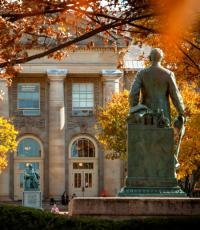
 Department Homepage
Department Homepage
 Department Homepage
The College of Arts & Sciences
Department Homepage
The College of Arts & Sciences
Media studies launches new initiatives
At Cornell, the field of media studies is flourishing, with new initiatives, new hires, and new courses.



